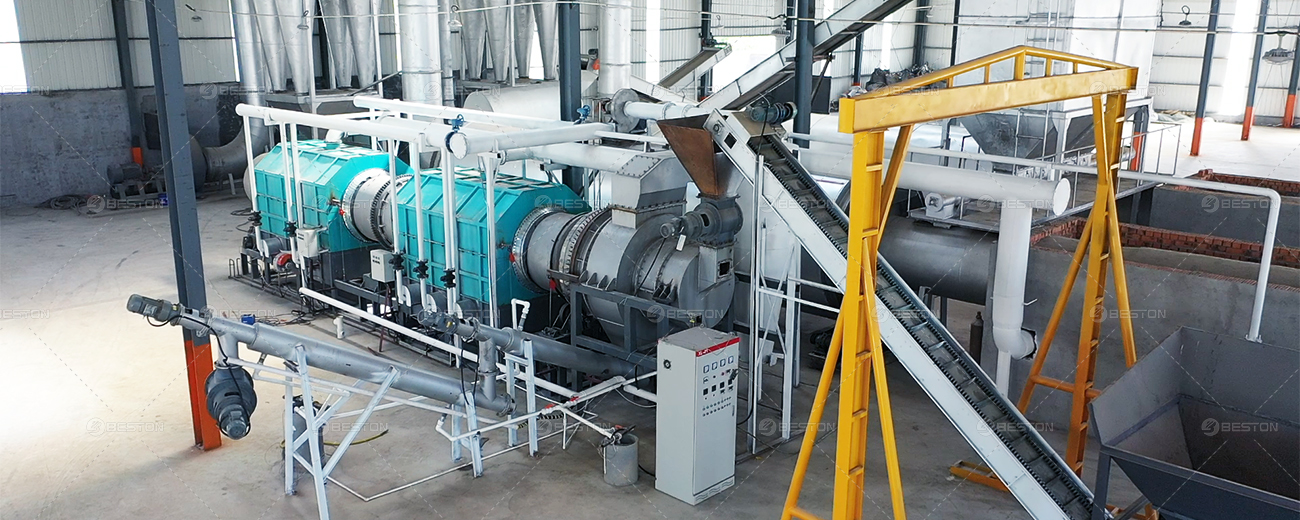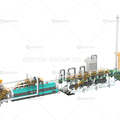The expansion of a biomass pyrolysis plant production module involves increasing its processing capacity and optimizing its efficiency to meet rising demand. As the global need for sustainable energy sources intensifies, biomass pyrolysis offers a promising solution for converting organic waste into valuable by-products such as bio-oil, gas, and charcoal. However, the successful scaling of such operations requires a deep understanding of the technical, logistical, and economic factors involved.
Capacity Expansion: Key Considerations
When expanding a biomass pyrolysis plant, the first crucial step is determining the plant’s required throughput. This involves an assessment of the biomass feedstock available for processing, whether it’s agricultural residue, wood chips, or other organic materials. As feedstock availability often dictates plant output, having a consistent and scalable supply chain is essential for any plant expansion.
For instance, increasing the feedstock input demands a proportionate upgrade in key components, such as reactors, condensers, and storage units. The reactor design itself must accommodate larger volumes of feedstock without compromising the pyrolysis process’s efficiency. As such, expanding the reactor size and ensuring appropriate heat management systems are in place become pivotal elements of scaling.

Advanced Equipment and Technologies
Upgrading to more advanced pyrolysis equipment is often necessary to handle larger volumes of feedstock and produce higher yields of bio-oil, gas, and charcoal. Improved control systems, such as automated monitoring and real-time data analytics, can enhance the efficiency of a biomass pyrolysis plant by optimizing reaction times and maintaining temperature stability. These advancements reduce energy consumption, mitigate the risks of inefficiencies, and ensure higher quality end products.
Energy management technologies also play an essential role in the scalability of pyrolysis operations. For example, utilizing waste heat recovery systems can significantly enhance the plant’s energy efficiency by reusing heat generated during the pyrolysis process. This can offset energy costs and further increase the overall productivity of the expanded plant.
Similarly, upgrading or implementing a more efficient gas cleanup system is critical when scaling production. As larger volumes of biomass are processed, there is an increase in the amount of volatile organic compounds and other impurities produced. A robust gas filtration system ensures that these by-products are adequately cleaned, ensuring compliance with environmental regulations.
Optimizing Feedstock Preprocessing
Efficient preprocessing of biomass feedstock is crucial for scaling the pyrolysis process. Biomass materials, depending on their moisture content, size, and composition, must undergo specific preparation to optimize their conversion efficiency. For larger-scale operations, this typically involves upgrading drying equipment, shredders, or hammer mills that reduce feedstock to the optimal size for efficient pyrolysis.
Preprocessing also includes moisture control, as high moisture content in biomass can reduce the efficiency of the pyrolysis reaction. Advanced drying technologies, such as rotary dryers or flash drying systems, ensure that the feedstock enters the reactor with the optimal moisture level, thus improving yield and efficiency during the pyrolysis process.
Environmental Compliance and Waste Management
One of the significant challenges when expanding a biomass pyrolysis plant is ensuring that all processes comply with local environmental regulations. As plant capacity increases, so does the volume of emissions and waste by-products. Regulatory bodies typically impose stricter environmental standards as production scales up, making it essential to integrate advanced emission control and waste management systems into the plant’s design.
Air filtration systems and scrubbers are required to capture and neutralize any harmful gases or particulates released during the pyrolysis process. Additionally, the management of solid residues like charcoal and ash requires advanced handling methods to ensure they are used effectively or disposed of properly. Many expanded plants opt to incorporate waste-to-energy systems or reprocessing capabilities to further optimize resource use.
Economic Considerations and ROI
Scaling a biomass pyrolysis plant requires significant capital investment, particularly when it comes to purchasing more advanced equipment and optimizing infrastructure. However, the potential return on investment (ROI) justifies the costs. By increasing production capacity, a biomass pyrolysis plant can scale its output of bio-oil and gas, which can be sold as renewable energy products. The by-product, charcoal, has significant commercial value, especially in agricultural applications and as a low-emission fuel.
A successful production module expansion also allows for economies of scale. With larger production volumes, unit costs per ton of feedstock processed tend to decrease, leading to more cost-effective operations. Additionally, optimized operational efficiency through automation and advanced technology further reduces labor costs and energy consumption.





